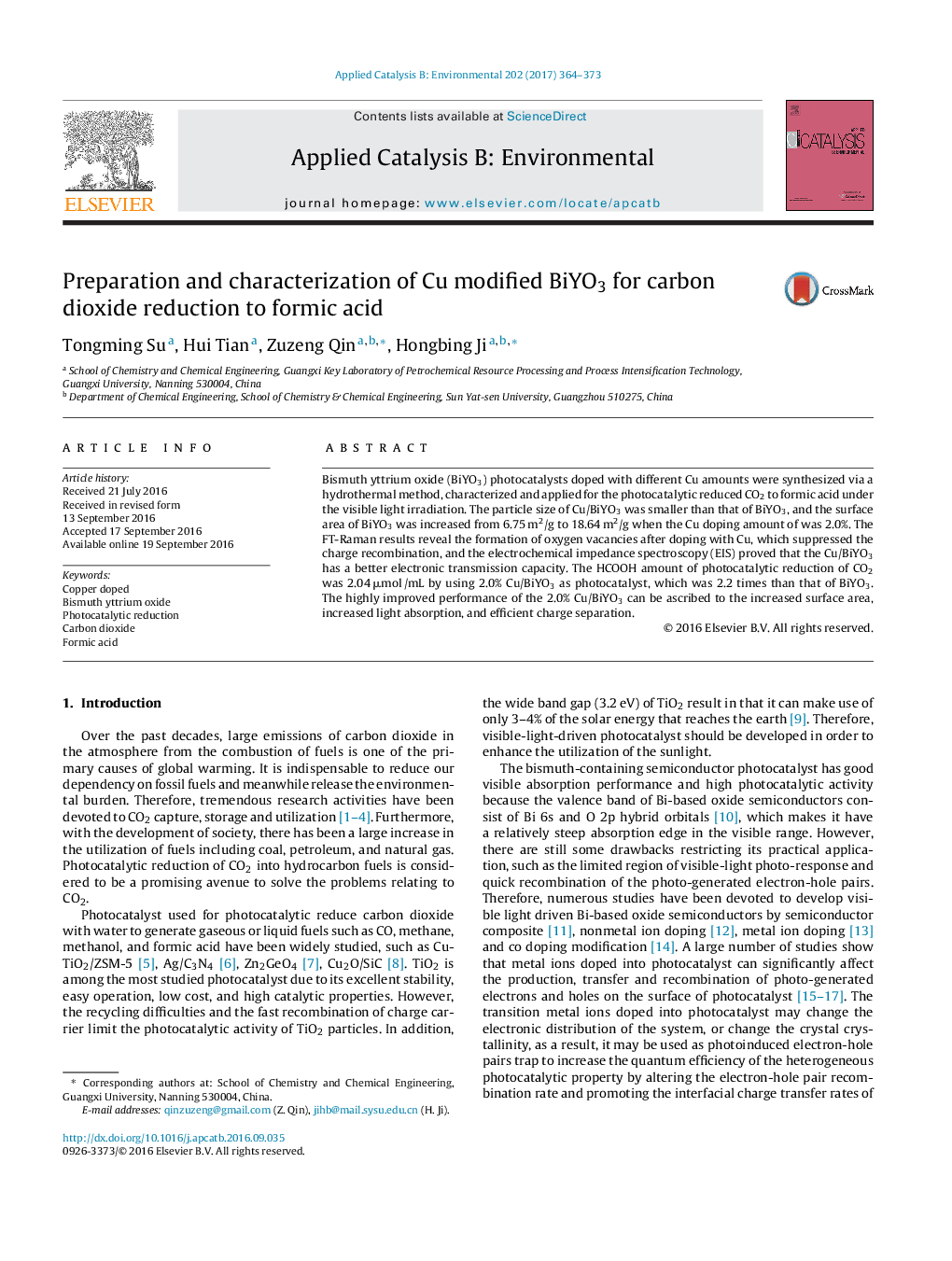| کد مقاله | کد نشریه | سال انتشار | مقاله انگلیسی | نسخه تمام متن |
|---|---|---|---|---|
| 6454855 | 1418818 | 2017 | 10 صفحه PDF | دانلود رایگان |

- CO2 was photocatalytic reduction to formic acid by Cu/BiYO3 under visible-light.
- The oxygen vacancies were formed in Cu/BiYO3.
- The separation of photo-generated carriers of BiYO3 was improved by doping with Cu.
- The Cu/BiYO3 has a better electronic transmission capacity than the BiYO3.
- The photocatalytic activity of BiYO3 was enhanced by doping with Cu.
Bismuth yttrium oxide (BiYO3) photocatalysts doped with different Cu amounts were synthesized via a hydrothermal method, characterized and applied for the photocatalytic reduced CO2 to formic acid under the visible light irradiation. The particle size of Cu/BiYO3 was smaller than that of BiYO3, and the surface area of BiYO3 was increased from 6.75 m2/g to 18.64 m2/g when the Cu doping amount of was 2.0%. The FT-Raman results reveal the formation of oxygen vacancies after doping with Cu, which suppressed the charge recombination, and the electrochemical impedance spectroscopy (EIS) proved that the Cu/BiYO3 has a better electronic transmission capacity. The HCOOH amount of photocatalytic reduction of CO2 was 2.04 μmol /mL by using 2.0% Cu/BiYO3 as photocatalyst, which was 2.2 times than that of BiYO3. The highly improved performance of the 2.0% Cu/BiYO3 can be ascribed to the increased surface area, increased light absorption, and efficient charge separation.
125
Journal: Applied Catalysis B: Environmental - Volume 202, March 2017, Pages 364-373